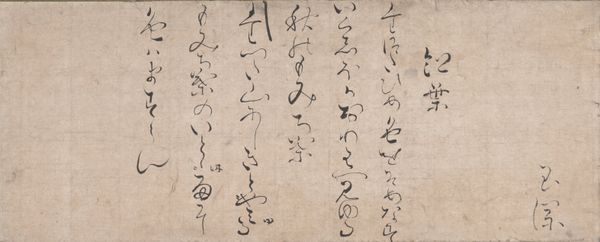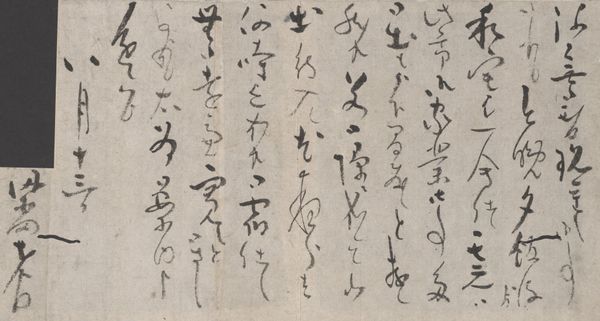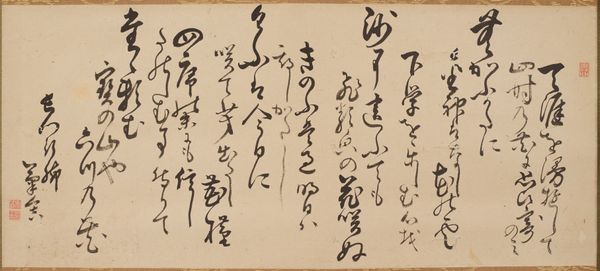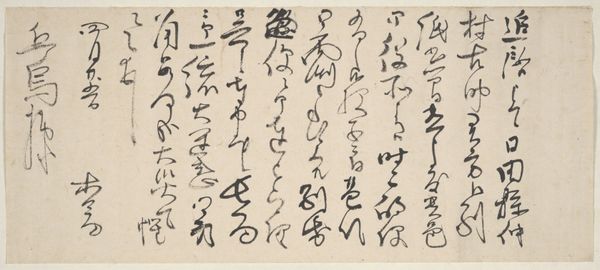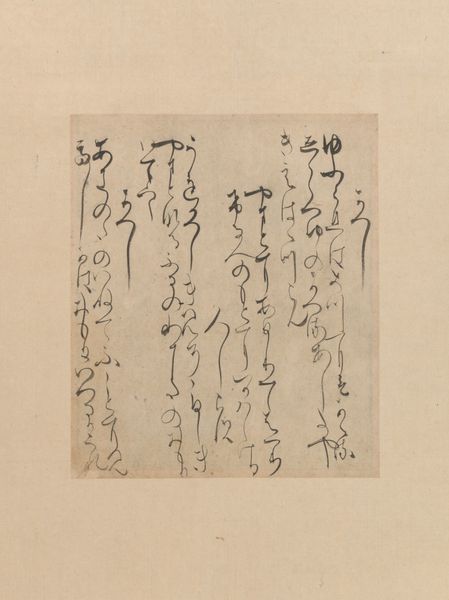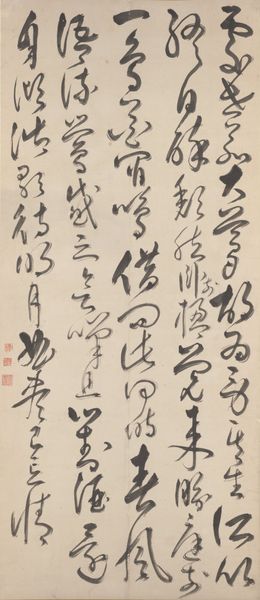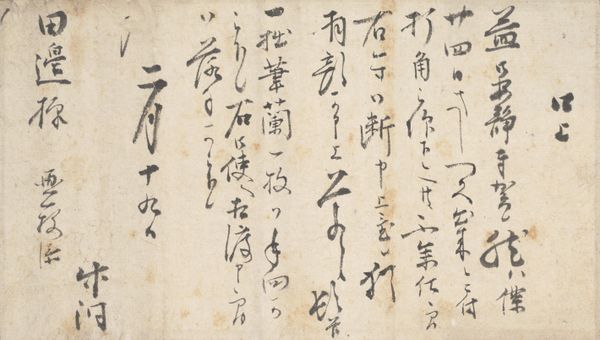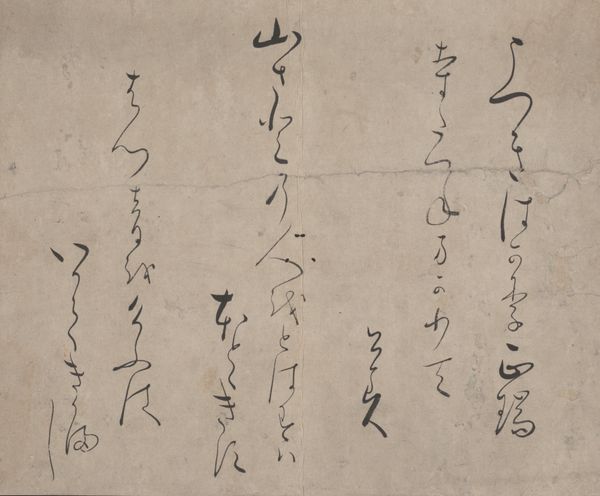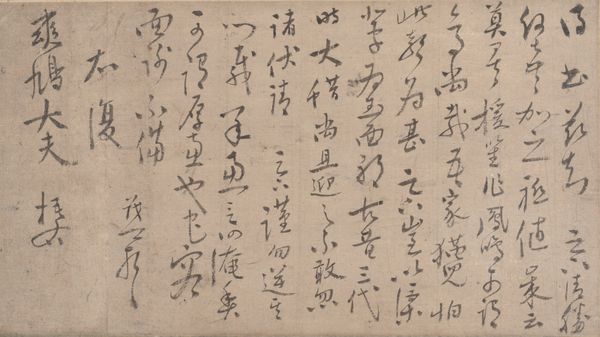
paper, ink-on-paper, hanging-scroll, ink
#
asian-art
#
japan
#
paper
#
ink-on-paper
#
hanging-scroll
#
ink
#
calligraphy
Dimensions: 6 × 12 3/16 in. (15.24 × 30.96 cm) (image)33 5/8 × 16 1/16 in. (85.41 × 40.8 cm) (mount, without roller)
Copyright: Public Domain
Curator: Here we have “Letter of the Sixth Month,” a hanging scroll dating from the 18th century, attributed to Hattori Nankaku. It’s rendered in ink on paper and is an exquisite example of Japanese calligraphy. Editor: It looks like a dance across the page. Even without understanding the characters, the lines possess so much expressive energy. I immediately feel a sense of intimacy, like glimpsing a personal note. Curator: Absolutely, and that sensation comes from the character of calligraphy itself, its longstanding association with meditative self-cultivation. Each brushstroke becomes a trace of the artist's inner state. Here, Nankaku adopts the classic conventions for depicting cultivated scholars as guardians of art and virtue, mirroring elite values for future generations. Editor: It's fascinating to consider that ink itself serves as both a practical tool for communication and a means for representing ideals. Given the artist’s context, wouldn’t this also point to larger issues about the consolidation of power through literacy and cultural expression? Who had access to this education? What kind of ideologies was it promoting through brushstroke and character formation? Curator: A valid concern. In its formalism, calligraphy serves a powerful function to perpetuate social hierarchies through both image and language. Calligraphy has deep roots in Chan Buddhism and can therefore reflect a kind of detachment in the arrangement of elements, their execution so practiced and ingrained in muscle memory. And of course the materiality here amplifies that, the slight absorbency of the paper adding another dimension of variability that invites deep engagement. Editor: I am always challenged by this tendency in art history, especially when it deals with artifacts such as this, where aesthetics often overshadow the underlying tensions of class and education at the time of production. As objects of power, works of art like this operate in networks of privilege that tend to gloss over questions of human rights and social justice. What should contemporary viewers be attentive to today? Curator: I understand your hesitation, but at its core, this piece serves as an emotional reminder, in its physical manifestation, of shared beliefs of those with authority and status who existed long ago. Even in our current moment, the image still possesses the ability to transcend, to evoke emotions tied to ideals and self-understanding across vastly different demographics and circumstances. Editor: Agreed, while simultaneously calling for critical self-reflection. Thanks for this exchange. Curator: A pleasure, as always.
Comments
No comments
Be the first to comment and join the conversation on the ultimate creative platform.
